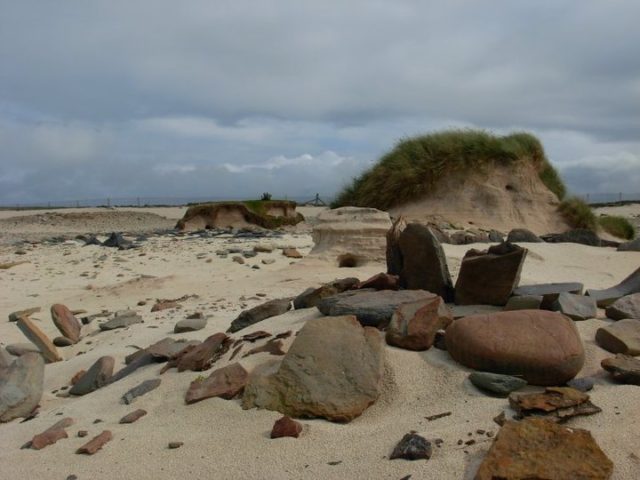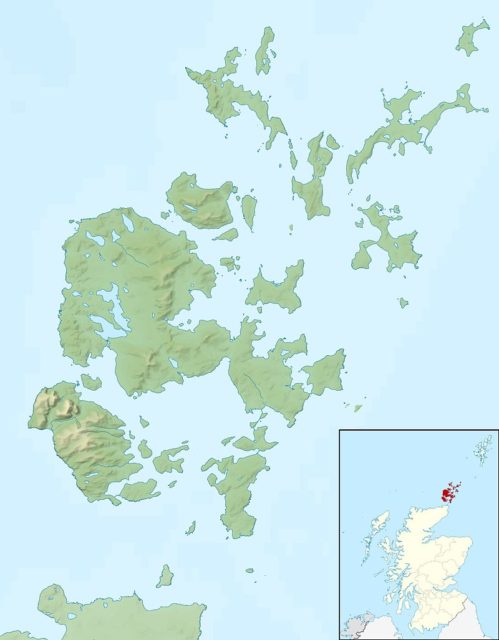The word sauna conjures up a relaxing spa. A sauna is known as a relaxing past time and is a familiar fixture at spas or pools.
Although Bronze Age remains have been excavated throughout the years on the Scottish island of Orkney, archaeologists are constantly finding more remains of buildings and ancient civilizations. Just recently, a new find by archaeologists was a sauna house. The building had been completed with a network of cells and a water tank for creating the steam.
The sauna happens to be one of 30 structures that have been excavated on the island. The buildings date between the years of 2,000 BC and 1,000 BC. They had all been discovered together along with middens and cemeteries which had been exposed by the natural erosion occurring in the area.
Experts on the archaeological dig believe that the sauna had originally been used for religious purposes as well as rituals. They even added that it could have been used for only select groups for the religious ceremonies.
Although they cannot prove it, archaeologists said that the building could have also been used as a healing and cleansing house or could have possibly been a place where women gave birth, where the sick and old went to die, or where bodies were cleaned before burial.
The discovery of the ancient buildings was the work of Ease Archaeology and Links of Noltland on the island of Westray.

The sauna find had been found right next to what is called Westray Wife. Found back in 2009, it is believed that this was the earliest depiction of a human face in Britain.
The archaeological excavations at the Links of Noltland have been in the works for a few years already. This most recent discovery is one of the most extraordinary to date, according to the experts.
The excavation work is funded by Historic Scotland. Just this past week they had merged with the Royal Commission on Ancient and Historic Monuments of Scotland (RCAHMS) in order to form a new heritage group called Historic Environment Scotland.
The Deputy Head of Archaeology Strategy at Historic Scotland, Rod McCullagh, had said that this is a beautifully preserved site and has many clues that point to how it was used, as well as why it should be considered an important building. This shows just how well the community worked together to build it.
He added that he and other experts knew it was a larger building that had the cells attached to it. They had also discovered that it had a large tank of water in the central structure which may have been used for boiling the water to make the steam in order to create the sauna effect.
Although he and the archaeologists don’t exactly know what the big boiler was used for, they can guess that it was used for more than just cooking. What makes the boiler so wonderful is that it had been made with elaborate architecture as well as a sound structure. McCullagh added that they are not sure if the boiler was made for a feasting hall, rituals, community discussions, or just the sauna, but they do know that it was held in high importance by the members of the community.
He explained that even though this was an exciting find, it will be a long process of analyzing and researching. However, after all of the work and research is done, they hope that they will understand more what kind of activities went on nearly 4,000 years ago.
Their earlier analysis had suggested that the building was most likely a burnt mound. It had been completed with a fireplace, water tank, and a pile of burnt stone. The experts had hypothesized, through experiments and by studying medieval Irish literature, that the stones had been heated on a hearth before they were placed in the tank of water, resulting in the water boiling and steaming for the special effects. The hot water may have then been used to cook in larger quantities or for baths, brewing, or textile working.

Again, what makes this building so special is that it was actually built into the landscape. It must have served as more than just burnt mounds, as it had specially packed cells which would have been used for more than simple burning.
It is believed that the place was built not just for any group or community member, but for a more selected reason. Other buildings like this found in other countries suggest that the saunas were used for performing rites of passage and spiritual activities. In Scandinavia, saunas had been represented as the safe places associated with cleansing and healing the body. However, they were also used as a place where deals and discussions were made.
In Native American tradition, sweat lodges had been heavily used as a place for rituals and where stories of the Great Spirit world were enacted.
In this particular area on Orkney during the Bronze Age, it would have been a cooler climate. The Noltland people who had once lived there would have filled the building with fire and steam.
As stated above, although this area has been investigated for the last several years, Historic Scotland finally gave experts permission to investigate the area in its entirety due to the stressful weather conditions.
